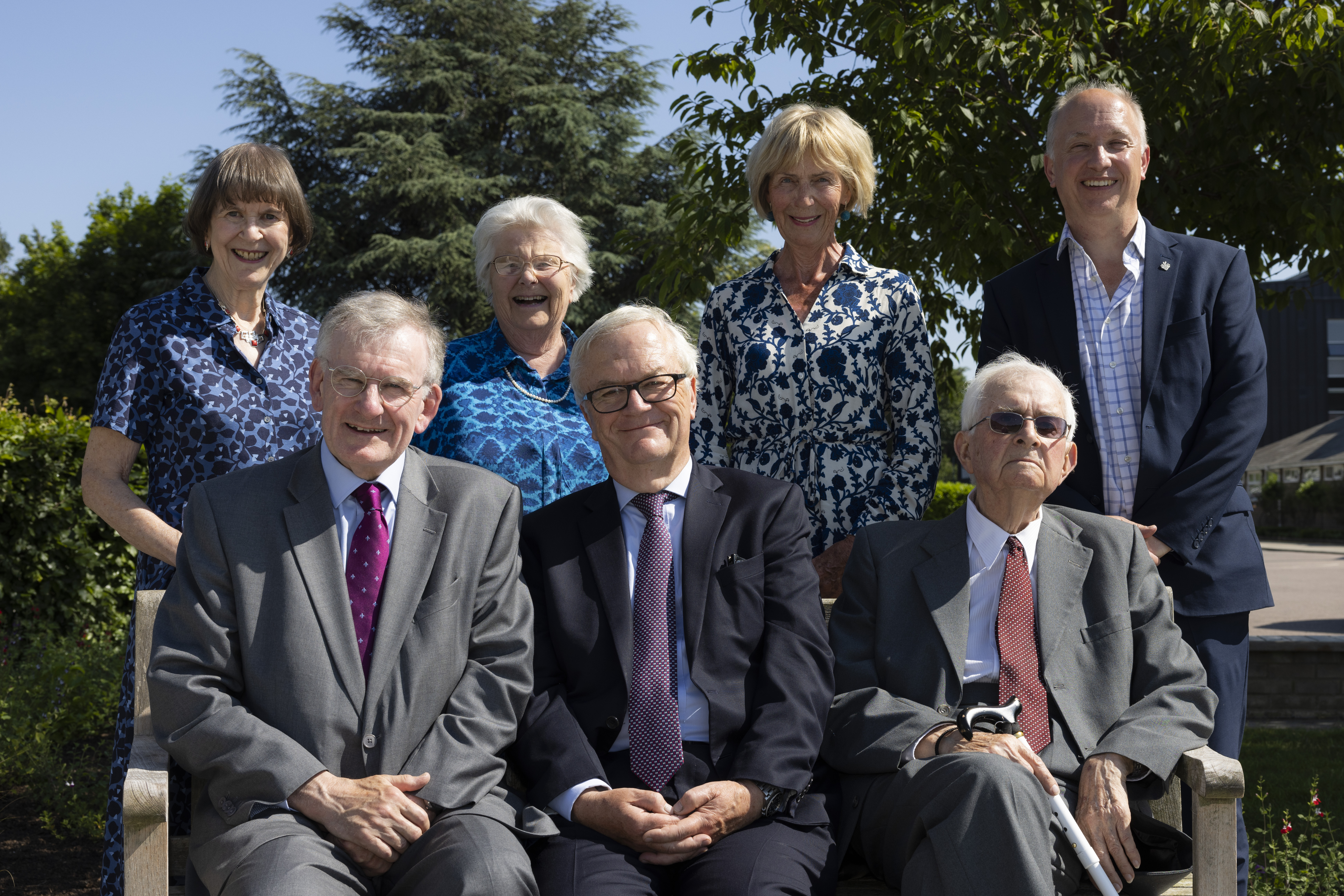
5 minute read
OP News AW23: A Tea Party to Remember
from OP News AW23
by PerseADO
A Tea Party to Remember:
Celebrating the Legacy of Four Perse Heads
As the saying goes: “Two heads are better than one”. Well, why settle for two when you can have four – Perse Heads, that is!
On the afternoon of Friday 16 June 2023, four successive Perse Heads met to take tea together at the School. Tony Melville, Martin Stephen and Nigel Richardson, accompanied by their wives Pauline, Jenny and Joy, gathered with the current Head, Ed Elliott, to reminisce.
To mark the occasion, Archivist David Jones and Head’s PA Liz Carson kindly put together a special booklet for each Head containing photos and snippets of memorable occasions during their respective tenures. Below, David Jones considers some of the significant developments that occurred under their leadership.
***
TONY MELVILLE (1969–1987)
When Tony Melville arrived, the First World War was only 51 years past. The Perse was a small Direct Grant school (420 boys and 25 teaching staff) whose academic record was outstanding and whose buildings were barely 10 years old. However, two serious challenges threatened the School’s equilibrium. The abolition of the Direct Grant in 1976 removed government-funded free places (up to 40% of Perse pupils). Would the School be forced into the state system? The answer was to go independent, followed by an appeal for £275,000 to set up a bursary fund and improve facilities. A remarkable £415,000 was raised, demonstrating faith in The Perse’s future.

The second challenge was the establishment of Sixth Form colleges, attractive and free alternatives to the Perse Sixth Form. The School therefore began to take pupils at 13 Plus, increasing numbers to 470 and helping to combat losses from the Sixth Form. When Melville retired in 1987, he could look back on the successful transition to independence, enlarged facilities and growth in numbers.
MARTIN STEPHEN (1987–1994)
For Melville’s successor, Martin Stephen, competition from Sixth Form colleges remained a worry. He emphasised the advantages of the Perse Sixth Form, especially extra-curricular opportunities, but further improvements to facilities were needed to dispel the view that The Perse was simply “an academic hothouse”. An art and design studio featured in a successful appeal for £600,000, music was given greater encouragement and business studies became a new A level option.
Boarding was in decline nationally, so the boarding houses closed in 1993. It was hoped to sell the site to fund a sports hall but an economic recession deferred the initiative.
Post-Direct Grant it was no longer safe to assume that “a good thing advertises itself”. Stephen engaged with local prep and primary schools, and more widely did his best to give The Perse publicity. The first Daily Telegraph A level league table (1991) was timely. The Perse came ninth amongst boys’ schools and was featured in the colour supplement.
Now, a radical development, first suggested by Melville back in 1983, was reconsidered: a merger with The Perse School for Girls. However, due to logistical issues and opposition from some quarters, it was decided to start taking girls into the Sixth Form instead. That, and the end of boarding, increased the rationale for ending Saturday morning school. In 1994, Dr Stephen was appointed High Master of Manchester Grammar School, and it was left to his successor to implement these changes.
NIGEL RICHARDSON (1994–2008)
Nigel Richardson came intending to allow himself time to get to know the School before considering new initiatives. However, a surge of 13 Plus applications suggested the creation of an extra Third Form in 1995, which paid for a new Astroturf pitch. Years of keeping the fees low had “under-capitalised” the School and facilities were inferior even to those in some state schools. However, developments in Cambridge were bringing more people and wealth to the area, so it was possible to expand numbers towards 600. Science labs and an IT centre followed.
The Millennium brought a new appeal for £1 million. This, and the sale of most of the boarding house site, funded the long-awaited Sports Centre and a new Sixth Form Centre. Wisely, Northwold House had been kept. In 1997 it became the premises of the Pelican. A Perse education was now available from the earliest years through to 18.

As Cambridge grew, demand for places increased. To expand the School without compromising academic quality, full co-education was phased in from 2007.
THE PERSE TODAY
Today, in 2023, the small Direct Grant boys’ school has become a large co-educational school with over 1,250 pupils and 130 teaching staff in the Upper. An enlarged pastoral and administrative system is in place and the area of building has more than doubled since 1969. An Old Persean who has not visited since the 1960s would hardly credit the transformation wrought during the time of the four Heads.
***
To find four successive Heads in the same room may not be witnessed again at The Perse for many years to come. The tea party provided a unique opportunity to share memories and converse on the transformative initiatives, academic feats and challenges surpassed. Their stories testified to their commitment in shaping young minds, and the impact a Head will have on a school. However, as Melville aptly recognised, there is only so much a Headmaster can achieve on their own. Recalling his first impressions of The Perse in 1969, he remarked: “I was very lucky to inherit a school with a high standard of teaching and competent staff. The School was a machine which was working well.”





